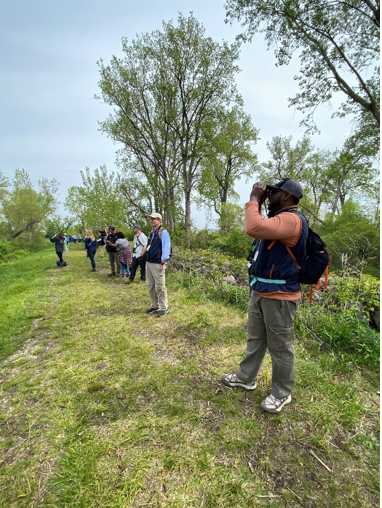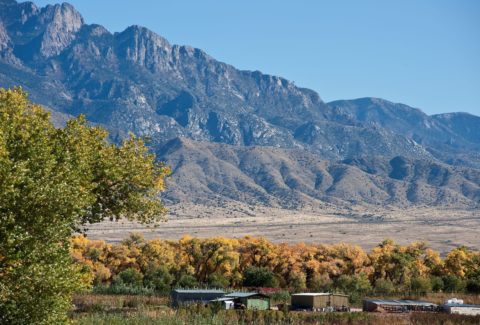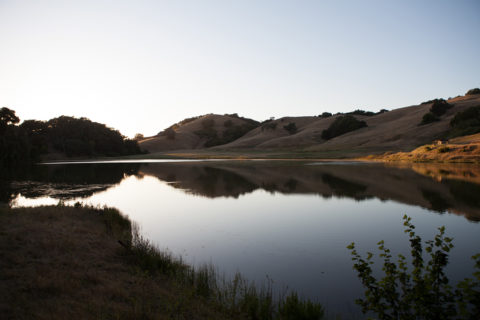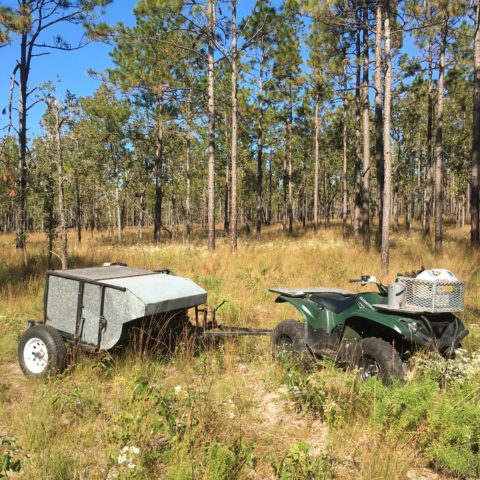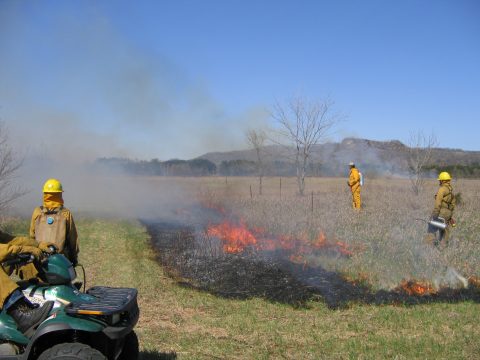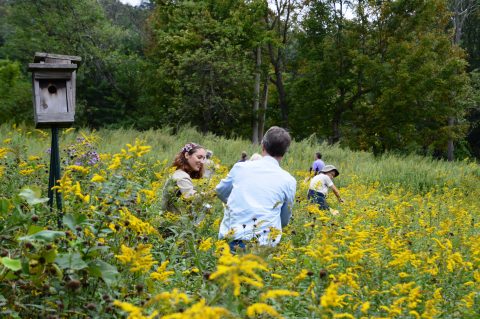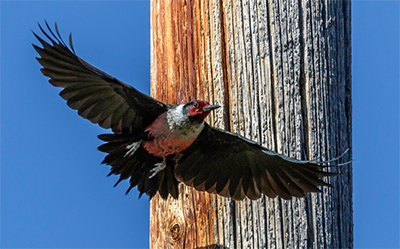2019 Small Grant Awardees
The Cornell Land Trust Small Grants Program is pleased to announce its third year of annual grants to support strategic bird conservation within the land trust community! We’d like to thank the March Conservation Fund for partnering with the Land Trust Initiative, enabling us to scale up the award dollars and technical advice provided to land trusts. Below you’ll find an overview of each awardee’s project:
Center for Natural Lands Management (Washington/Oregon) $20,000
The Center for Natural Lands Management (CNLM) leads the Cascadia Prairie-Oak Partnership (CPOP), a cooperative conservation project combining their expertise in land management, habitat restoration, and rare species recovery. A 1,600-acre conservation easement in Oregon’s Willamette Valley protects an actively grazed working lands property that contains some of the area’s most sizable and intact prairie-habitats and is home to the region’s largest known population of Oregon Vesper Sparrow (OVSP), a species petitioned for listing under the Endangered Species Act. “Done correctly, grazing replicates the natural disturbance process that historically created habitat conditions needed by vespers.” says Gary Slater, CNLM’s Avian Conservation Program Manager. Utilizing CPOP’s established infrastructure and with participation by the landowner, CNLM will conduct habitat management and inform conservation partners and private landowners about the plight of the OVSP. They will implement a community outreach event to encourage participation in OVSP recovery and an on-site workshop to demonstrate successful management strategies, including the effective use of grazing as a management tool. Monitoring, using point counts and eBird, will contribute to a time series of data instrumental in tracking changes in abundance and distribution to guide future management actions. “We want to bring in and educate more private landowners to increase the amount of suitable habitat in the region for this rare grassland bird,” says Elspeth Kim, CNLM’s Cooperative Conservation Program Manager. Results from this project will improve conservation outcomes for OVSP and other vulnerable grassland bird species by increasing implementation and effectiveness of compatible habitat management practices.
Conservation Foundation of the Gulf Coast (Florida) $20,000
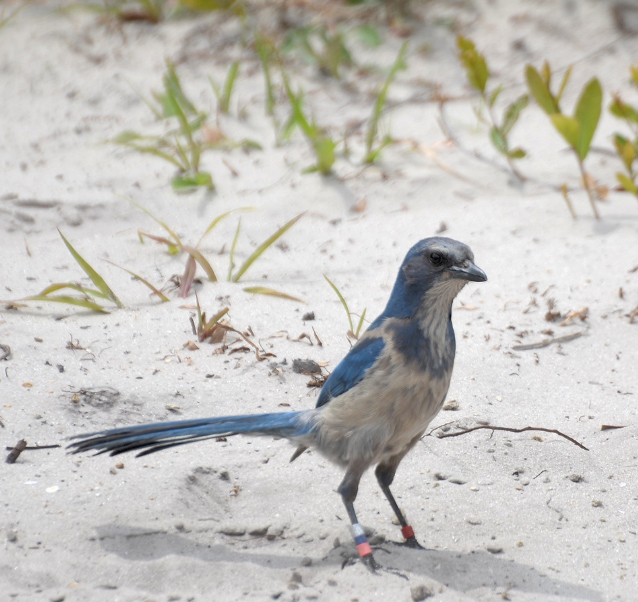
The Conservation Foundation of the Gulf Coast (CFGC) is working in Southwest Florida to save the character and biodiversity of their coast, along which lies one of the nation’s rarest habitats, Florida scrub, and one of the world’s most charismatic and interesting birds, the Florida scrub-jay. The centerpiece of Conservation Foundation’s work is the creation of the Myakka Island Conservation Corridor, a conserved landscape of more than 110,000 acres, essential for the recovery of the endangered Florida panther as well as the scrub-jay, and for protecting clean coastal water. Recently CFGC permanently protected 38 acres within the Myakka Island Conservation Corridor that contains 13 acres of scrub habitat. In partnership with the Cornell Lab of Ornithology, CFGC will treat exotic grasses and perform mechanical fuel reduction and burns on this land to create scrub-jay habitat within an essential dispersal area between two major jay populations. Trails will be created for public education, monitoring opportunities, and recreation in order to build awareness and support for a 2020 land conservation referendum in Manatee County, which would establish a funding source for acquiring environmentally sensitive lands. “We are grateful to the Cornell Lab of Ornithology for this grant to conserve and restore scrub habitat for the Florida scrub-jay,” states Christine Johnson, president of Conservation Foundation. “It helps fulfill one of our key land conservation priorities, of protecting and restoring Florida’s most imperiled places and species.”
Mississippi Valley Conservancy (Wisconsin) $20,000
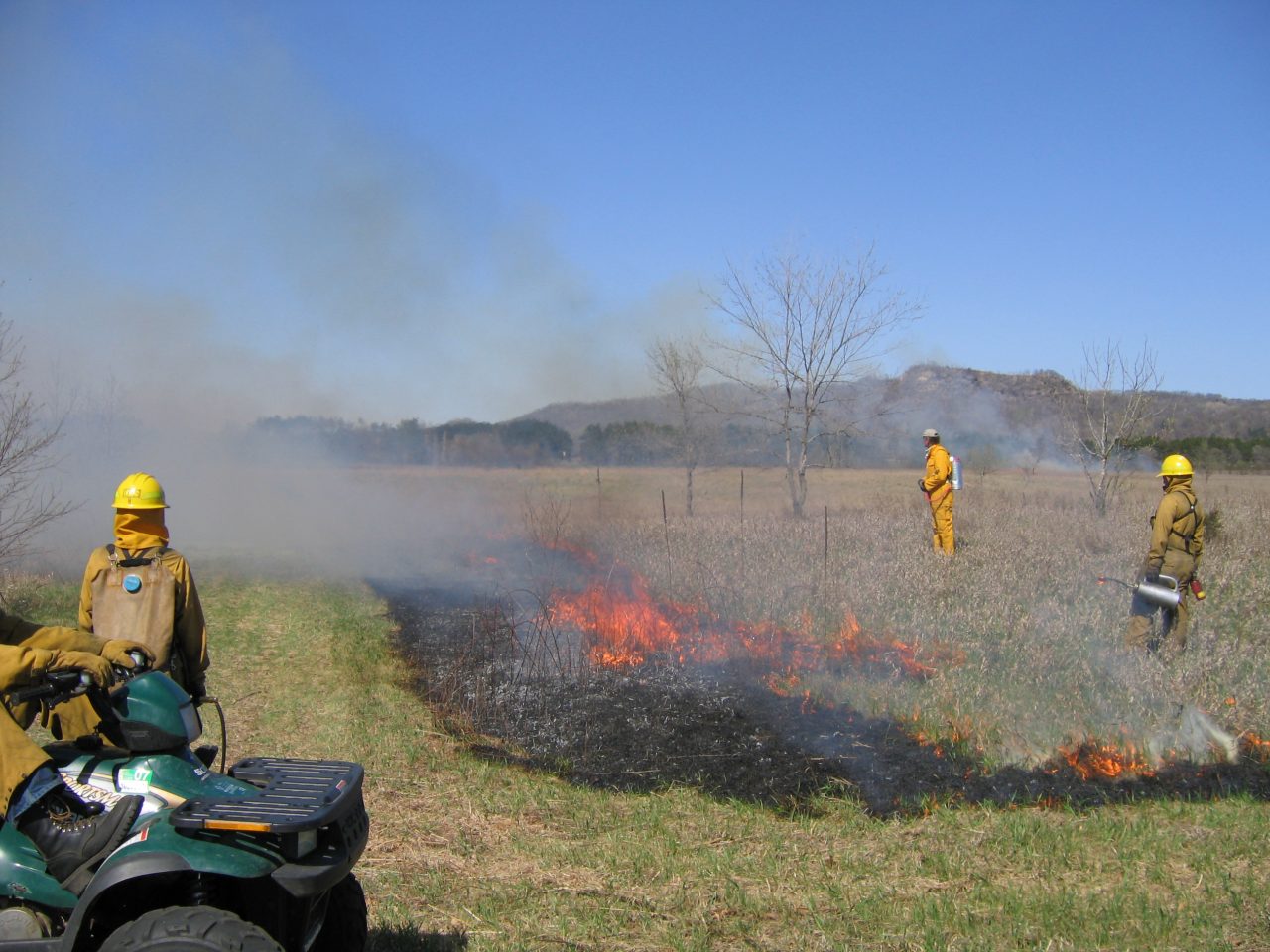
The Mississippi Valley Conservancy (MVC), along with project partners Valley Stewardship Network, the Kickapoo Valley Reserve, and the Wisconsin DNR are spearheading the Kickapoo Bird Habitat Initiative, a three-pronged approach of habitat management, data collection, and public education and outreach within the Kickapoo Valley – Wildcat Mountain Important Bird Area. This collaborative effort will build connectivity for bird species of greatest conservation need by using GIS to prioritize private land parcels, connecting private landowners with cost-sharing opportunities such as farm bill programs for habitat management implementation, performing different types of management in both forests and grasslands, and utilizing demonstration sites and workshops for landowners and conservation practitioners to showcase and teach management techniques. “Bird surveys, using eBird, will be conducted on both private and public lands to establish the baseline data we need to begin tracking the long-term impacts of our habitat management on bird populations,” says MVC Conservation Director Abbie Church, “we have a unique opportunity to manage large blocks of contiguous habitat meeting both forest-interior and grassland nesting habitat needs for a suite of birds”.
Southern Appalachian Highlands Conservancy (North Carolina) $20,000
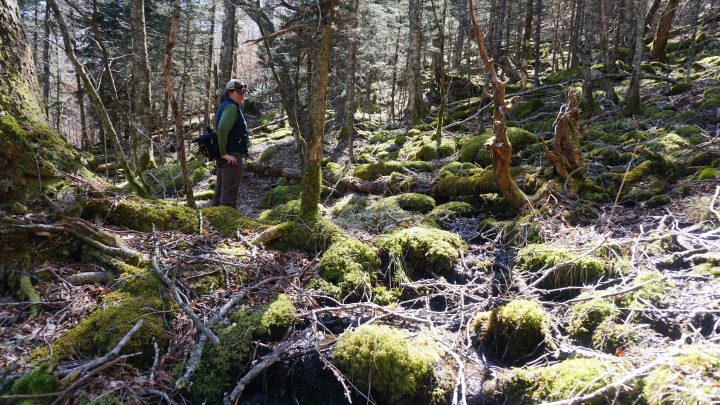
The Southern Appalachian Highlands Conservancy (SAHC) and its partners restore and manage globally endangered habitats found in the Southern Appalachians, including Red Spruce – Fraser Fir “sky islands” and rapidly declining shortleaf pine habitats. The restoration of these habitats support some of the rarest species in their region, including Northern Saw-whet Owl, Carolina Flying Squirrel, Blackburnian Warbler, Red Crossbill, Brown-head Nuthatch, and Northern Bobwhite. This project will actively manage these habitats as well as conduct pre and post-management workshops to demonstrate the use of low cost, minimal impact forestry practices to restore declining conifer ecosystems in the Southern Appalachians for the benefit of multiple species of greatest conservation need. Point count surveys and eBird will be used to monitor and assess the avifauna and growth of these sites for at least three years post treatment. Through outreach and education, this project will serve as a teaching tool for private landowners, federal and state agencies, and other NGOs across the region who are interested in the restoration of rare and declining conifer habitats. “We are thrilled to partner with the Cornell Land Trust Bird Conservation Initiative on this vitally important project and look forward to seeing our partners and conservation community use the methods demonstrated on a larger scale.” Says Kristy Urquhart, SAHC’s Associate Director.
Driftless Area Land Conservancy (Wisconsin) $5,000

The Driftless Area Land Conservancy, in partnership with the Wisconsin Department of Natural Resources (WIDNR), U.S. Fish and Wildlife Service, The Nature Conservancy, and other agencies and conservation organizations, created the Southwest Wisconsin Grasslands Network (SWGN) to promote conservation and grass-based agriculture practices that protect grassland bird habitat in working agricultural landscapes. SWGN is teaming up with the Madison Audubon Society to implement a “Landowners Matter” Campaign, an effort to identify landowner values, motivations, and barriers to conservation within two high priority Grassland Bird Conservation Areas. “Private lands are pivotal for the conservation of grassland birds. Ultimately, the success of this effort is predicated on effective collaboration with private landowners who manage these critical habitats” says Craig Thompson, WIDNR section chief and bird expert. This project will provide timely qualitative and quantitative data concerning: (1) landowner needs, interests, and hurdles to implementing grassland protection measures; (2) effective landowner engagement methods that result in increased awareness of grassland bird conservation issues; and (3) participation rates in voluntary conservation programs such as the Conservation Reserve Program and the Agricultural Conservation Easement Program. SWGN will utilize stakeholder interviews, landowner surveys, and focus group information to help inform a series of interactive “Celebrate Grasslands!” educational events, including a traveling library exhibit on the interconnectedness of grasslands, grassland birds, and the Driftless landscape, and a series of evening events for local communities. Grant outcomes and information sharing with partners generated through this “Landowners Matter” Campaign will ultimately help build SWGN’s capacity to implement grassland conservation throughout the region.
Upstate Forever (South Carolina) $5,000
Upstate Forever (UF) protects native habitat and working lands with restoration or management potential for early successional grassland habitat to benefit grassland birds, primarily in the Piedmont Ecoregion of Upstate South Carolina. For this project UF, in conjunction with Upstate South Carolina Partnership for Grassland Bird Conservation, will work with local birding clubs to conduct research and record data in eBird to establish a baseline for grassland birds on two distinctive conservation easements, a nature park and city landfill, which differ in their respective grassland plant communities and management practices. Wildlife biology students at Clemson University will research regional management practices that are being implemented to enhance grassland bird habitat. These data and research will then be analyzed and compiled to create a condensed guide used to inform land trust partners and regional landowners of the best management practices to restore and improve grassland bird habitats while meeting landowner management and productivity objectives. UF will develop an outreach program to present project findings to land easement contacts and natural resource agencies to share the story of this project, develop social media outreach, and educate supporters of our land trust, landowners, and birding organizations on grassland birds and land management practices for their benefit. “This work will provide a foundational base of knowledge of practices conducive to grassland birds and develop relationships among Upstate South Carolina Partnership for Grassland Bird Conservation collaborators.” says Scott Park, UF’s Land Conservation Director.



